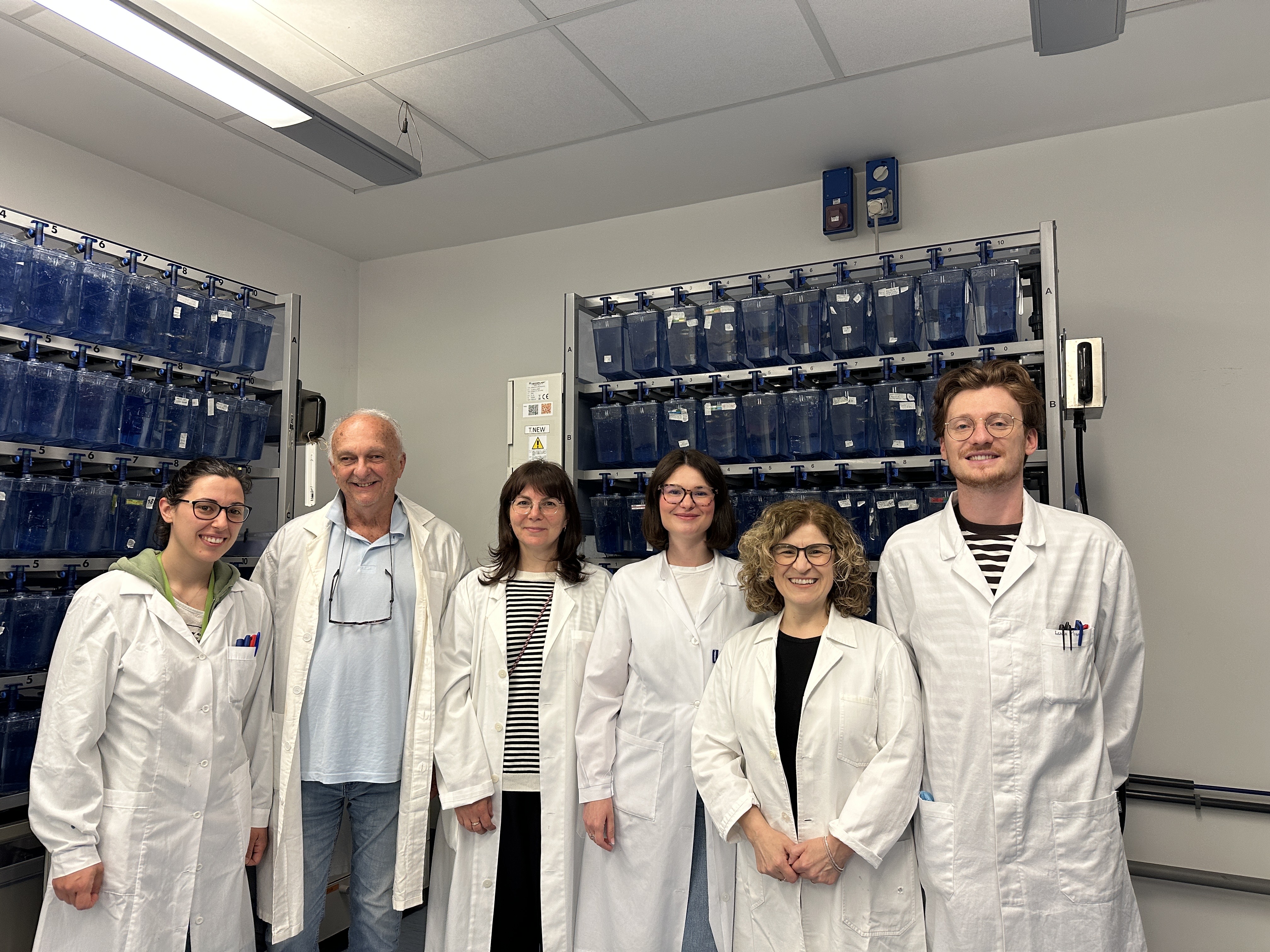An important scientific discovery from the University of Brescia was recently published in Brain, one of the most authoritative international neuroscience journals. The study, coordinated by Dr. Luca Mignani with the contribution of Dr. Jessica Guerra and Dr. Mirella Belleri - researchers at the laboratory directed by Prof. Marco Presta - was conducted in collaboration with the University of Barcelona.
Entitled “Brain accumulation of lactosylceramide characterizes β-galactosylceramidase deficiency in a zebrafish model of Krabbe disease”, the research describes an innovative model of Krabbe disease developed in zebrafish (Danio rerio) through advanced genome editing techniques. This model made it possible to observe alterations of the central nervous system similar to those of human disease, such as demyelination, neuroinflammation and neurodegeneration. The most relevant novelty of the study is the identification of lactosylceramide as a possible new mediator of neuroinflammatory and neurodegenerative damage in the disease. This finding opens new perspectives in understanding pathogenetic mechanisms and in the search for more targeted therapies.
“This experimental model” explains Dr. Mignani, “represents an innovative tool for studying Krabbe disease and could accelerate the development of more effective treatments for a condition that, to this day, has a very poor prognosis”. This publication highlights the excellence of biomedical research at the University of Brescia, particularly in the fields of neuroscience and molecular biology, and emphasizes the importance of translational research in the fight against rare diseases.


